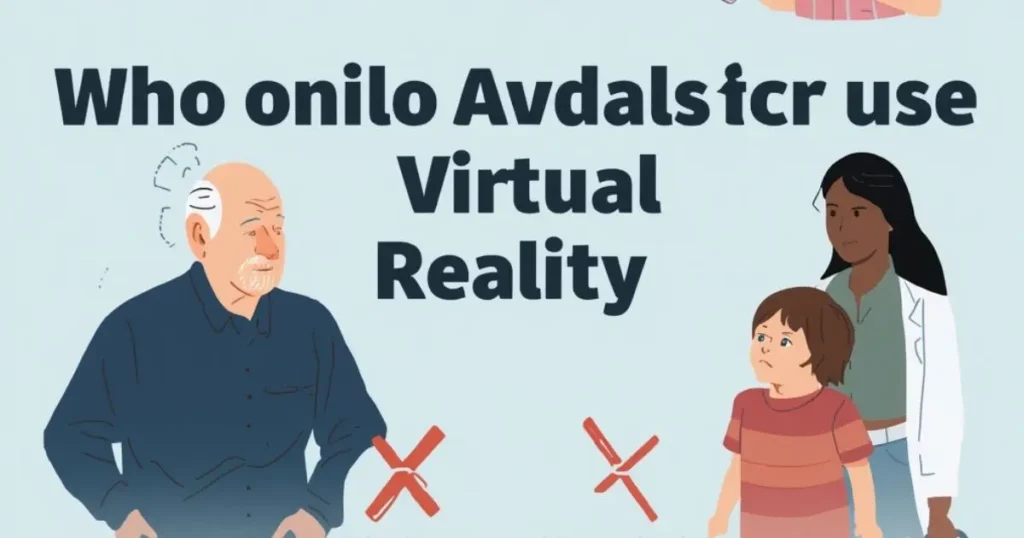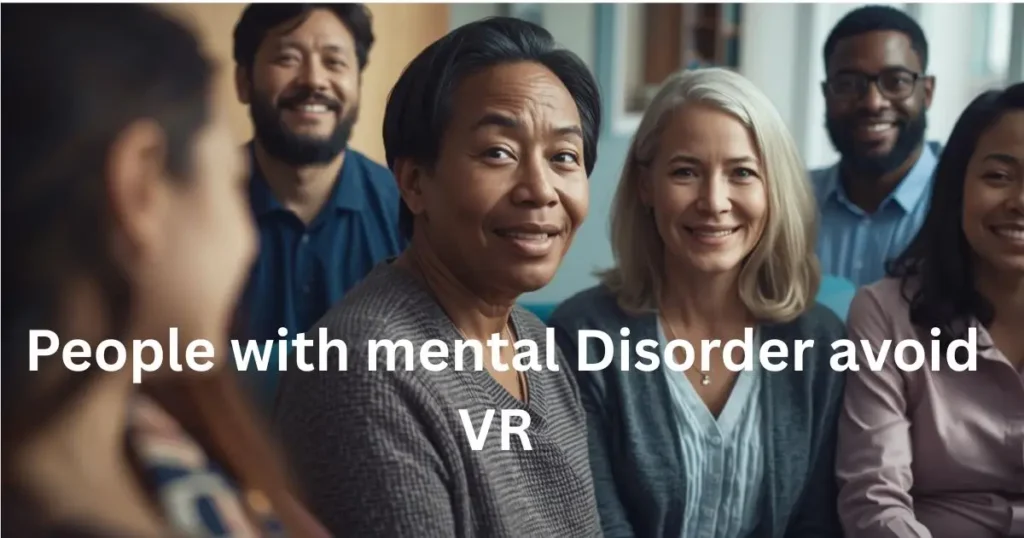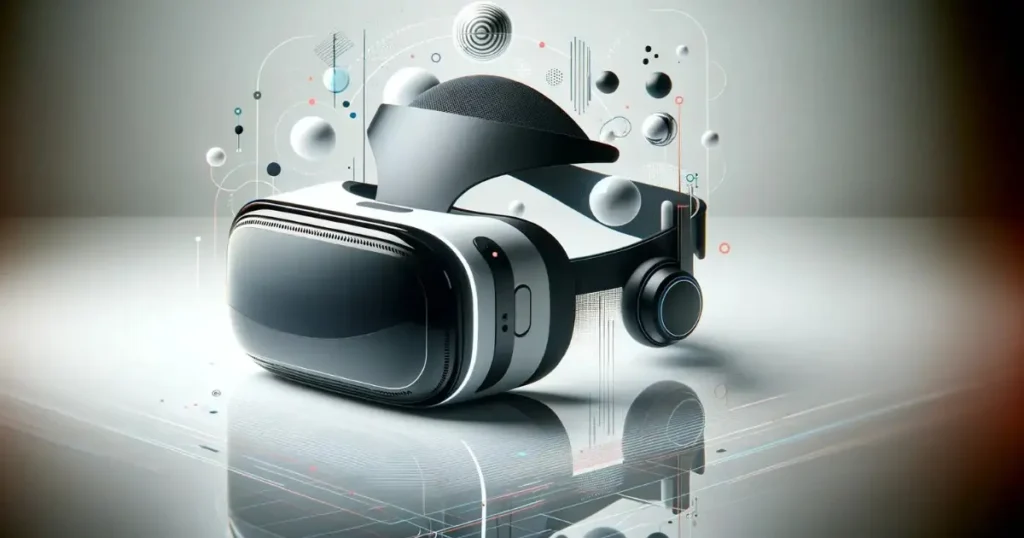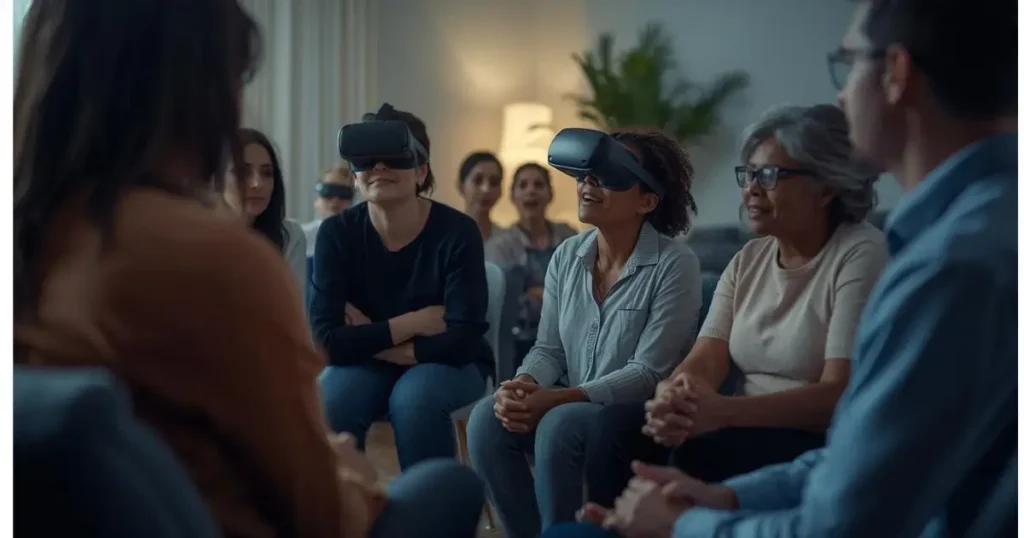
Immersive technology can transport users to different realities. Enjoying real-world activities virtually can engage an individual’s senses. The sensationalism of VR creates an illusion of the technology being suited for all people. Who should not use virtual reality? In this article, we will examine the risks and health concerns associated with VR, including its effects on both physical and mental health.
The experience of entertainment, gaming, and even healthcare VR technology has expanded and is underpinned by the use of Virtual Reality Healthcare entertainment gaming technology. The health risks associated with VR use justify the need for particular people to avoid this technology.
Users with heart conditions are susceptible to panic reactions and increased heart rates, which makes use of the technology potentially dangerous for them. Similarly, people suffering from motion sickness and vertigo will find VR to increase dizziness and nausea. Pregnant women, the elderly, and people suffering from vertigo are also advised to limit use of VR technology due to its disorienting effects and problems with balance. Understanding the health risks associated with VR will enable people to make informed decisions about its use.
What is Virtual Reality?
Virtual Reality (VR) technology enables people to wear a headset and immerse themselves in a simulated 3D world. It is applicable in the gaming industry, education, training, and the healthcare field. It can be entertaining; however, VR technology also presents some health risks, which users should be aware of. VR avatars and headset-immersive technologies can cause users to experience VR dizziness, VR syndrome, and strains or discomfort.
VR Health Risks
Immersive VR technologies can cause user side effects of VR fatigue or excessive tiredness, VR syndrome, and, in rare cases, VR seizure symptoms. These effects are due to the brain attempting to discern highly artificial and layered adaptive stimuli. Cybersickness is a well-known phenomenon that affects users in almost every VR headset and is primarily caused to sensory mismatch and VR syndrome. This primarily explains the common complaints of VR nausea and VR dizziness.
Who Should Not Use Virtual Reality
There are certain groups of people Who Should Not Use Virtual Reality due to health concerns. Some may experience discomfort, while others could be at risk for more severe health issues. Let’s examine some of the primary groups that should limit or avoid VR use.
People with Heart Conditions
VR and heart conditions can be a dangerous combination. The dangers of VR headsets are not limited to dizziness and nausea. High levels of immersion in VR can increase heart rate, which may cause problems for individuals with cardiovascular issues. VR overuse risks may include panic attacks or sudden spikes in blood pressure. VR motion sickness may also worsen for individuals with heart problems.
People with Epilepsy or Neurological Disorders

Individuals with photosensitive epilepsy and VR should be cautious. VR seizures are a concern for those with epilepsy. The flashing lights and rapid movements in VR environments can trigger seizures in some people. Additionally, those with other neurological disorders may experience worsened symptoms, including VR disorientation and VR balance issues. It’s essential to follow VR safety guidelines and consult a doctor before using VR.
Health Risks of VR for Specific Groups

While VR is popular among all ages, Who should not use virtual reality is due to potential health risks. Let’s take a closer look at specific groups that should be cautious.
Is VR Safe for Kids?
Is VR safe for kids? Not necessarily. VR and children’s safety is a concern because their brains are still developing. The immersive nature of VR can overstimulate children, leading to issues such as VR dizziness, eye strain, and nausea. Can kids use VR headsets safely? It’s recommended that children under 12 avoid using VR. Prolonged VR use can also have mental health effects on young minds, as it can distort their perception of reality.
Pregnant Women and VR Safety
Should pregnant women use VR? Pregnancy is another situation where the use of VR should be limited. The motion in VR can cause disorientation and dizziness, which may be uncomfortable or even harmful for pregnant women. VR dizziness and nausea can also increase the risk of falling, which can harm both the mother and the baby. It’s best for pregnant women to avoid VR altogether.
VR Use and Mental Health
VR’s immersive experience can have both positive and negative effects on mental health. While it can be used for therapeutic purposes, prolonged or excessive use can lead to problems.
Mental Health Effects of VR
The mental health effects of VR include VR addiction and VR overuse risks. People may become overly immersed in virtual worlds, leading to withdrawal from real-life activities. Can VR affect mental health? Yes, especially in people who are already struggling with mental health issues such as anxiety or depression. It’s important to take regular VR breaks to maintain a healthy balance.
Prolonged VR Use Risks
The risks of prolonged VR use are significant, especially for individuals who use VR for extended periods. VR fatigue, VR headaches, and even VR eye strain are common complaints. Taking regular breaks and following VR headset ergonomics guidelines can help reduce these issues. Remember, how long should you use VR? It’s recommended to take a break every 15-30 minutes of use.
VR and Physical Health Concerns
Along with the mental and emotional impacts, there are physical risks associated with using VR.
VR and Eye Strain
Is VR bad for your eyes? Extended use of VR can cause VR eye strain, particularly for individuals with pre-existing vision issues. The intense screen brightness, flickering, and close proximity of the screen to the eyes can cause discomfort. It’s essential to follow VR safety guidelines to minimize eye strain, including adjusting the VR headset properly and taking regular breaks.
VR and Headaches

Another common issue with VR is VR headaches. These can occur when the brain struggles to process the visual and sensory information it receives. People who are prone to migraines or have sensitive vision may experience headaches after using VR for even short periods. VR motion sickness can also contribute to headaches.
Safety Guidelines for VR Use
If you are healthy and not part of the groups that should avoid VR, it’s essential to follow safety guidelines to minimize the risks. Here are some tips to ensure safe use of VR.
Safety Guidelines for VR Use
Take frequent breaks (every 15-30 minutes)
Adjust the headset for comfort and proper vision.
Limit VR use to avoid VR fatigue and eye strain.
Be mindful of your surroundings to prevent physical injury.
Avoid VR if you have any pre-existing health conditions.
Use VR in a well-lit area to reduce visual strain.
Conclusion: Who Should Limit or Avoid VR Usage?
In conclusion, Who should not use virtual reality People with heart conditions, epilepsy, vision problems, and those who are pregnant should avoid VR or use it with caution. Additionally, children under 12 and the elderly should limit their use of VR. The health risks of VR include physical issues like dizziness and eye strain, as well as mental health effects like addiction and disorientation.
To ensure safe use, always follow VR safety guidelines, take VR breaks, and be aware of your limits. Virtual reality can be a fantastic experience, but it’s essential to consider your health before diving in.
FAQs
Who Should Not Use Virtual Reality?
Certain groups of people should avoid using Virtual Reality (VR) due to potential health risks. Individuals with heart conditions should be cautious, as the immersive experience can increase heart rate and potentially trigger panic attacks or other cardiovascular issues. People with epilepsy or neurological disorders should also avoid VR, as flashing lights and rapid movement may trigger seizures. Pregnant women should steer clear of VR due to the risk of dizziness, discomfort, or balance issues. Children under the age of 12 and elderly people may experience dizziness, disorientation, or even falls due to the immersive nature of VR. Additionally, individuals with motion sickness, vertigo, or vision problems, such as eye strain or glaucoma, should refrain from using VR.
Who Cannot Use VR?
While VR technology is generally safe for most people, certain individuals should exercise caution when using it. Those with photosensitive epilepsy, serious heart conditions, or balance problems are at a higher risk of experiencing negative effects, including VR dizziness, VR nausea, or even seizures. People with visual impairments, such as lazy eye or severe eye strain, may also find VR uncomfortable or even harmful. If you suffer from cybersickness or motion sickness, using VR can worsen symptoms. Pregnant women and elderly individuals are generally advised against using VR due to concerns related to balance and safety.
Can Legally Blind People Use VR?
People who are legally blind may face significant challenges when using VR, as the technology heavily relies on visual input. While some VR systems have settings to help those with partial vision or other visual impairments, they may not offer a fully immersive experience for those who are completely blind. The use of VR for people with severe vision impairment may not provide the intended experience, and the lack of visual stimuli could limit the effectiveness of the technology. However, advancements in VR accessibility are ongoing, and developers are working to create more inclusive experiences for individuals with visual challenges.
At what Age Should one Not Use VR?
Children under the age of 12 should generally avoid using VR. Children’s brains and bodies are still developing, and exposure to VR at a young age can lead to potential health risks, including VR dizziness, eye strain, and even mental health effects. The immersive experience of VR may distort a child’s perception of reality and cause them to feel overwhelmed. For elderly people, VR may cause issues such as balance problems or disorientation. It’s essential for people of all ages to use VR in moderation and follow safety guidelines.
How Does VR Affect the Brain?
VR affects the brain by tricking it into thinking it is in a different environment. The visual and sensory input from the VR headset creates an immersive experience that the brain interprets as real. This can cause changes in heart rate, blood pressure, and stress levels, particularly when VR is used in high-intensity settings, such as gaming or simulations. The brain may struggle to process the sensory conflict between what the eyes see and what the inner ear senses, leading to symptoms such as cybersickness, dizziness, or nausea. Prolonged VR use can also lead to VR fatigue or headaches as the brain struggles to process continuous stimulation.
Is VR Unhealthy?
While VR itself is not inherently unhealthy, excessive use or prolonged exposure can lead to health issues. VR motion sickness, VR nausea, VR eye strain, and headaches are common complaints associated with virtual reality (VR) use. Overusing VR can lead to VR fatigue and dizziness, particularly if breaks are not taken. Some studies suggest that excessive use of VR can have long-term effects on mental health, including addiction to virtual environments or disconnection from reality.


